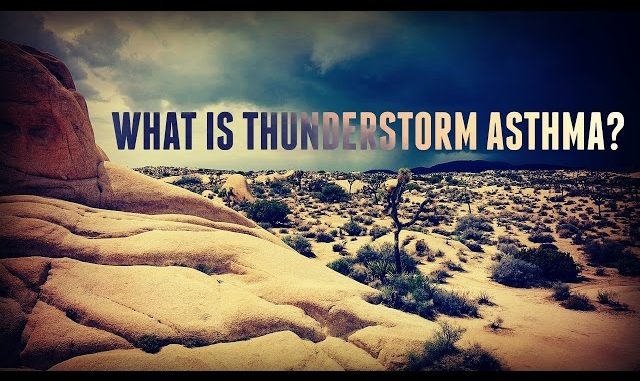
Lat month more than 8500 people were hospitalized and at least eight others died after a bizarre thunderstorm left emergency services stretched beyond capacity.
A similar event has now been reported in Kuwait, with claims that thunderstorm activity triggered a mass reaction and nearly a thousand people were taken to the hospital with severe asthma. At least five people have also died.

BYPASS THE CENSORS
Sign up to get unfiltered news delivered straight to your inbox.
You can unsubscribe any time. By subscribing you agree to our Terms of Use
Latest Video
What is really going on?
SHTF reports:
Is a covert, deadly substance being deliberately sprayed from planes (as governments did back in the sixties, and countless times since)? Or is is just something harmful being swept up from nearby farms and factories?
Whatever the explanation, the pattern is completely bizarre, especially since it has now happened in back to back cases, despite the fact that the phenomenon has been sparsely documented and extremely rare, to the point of being unheard of.
The following was translated from Arabic to English via Google, so there may be errors or poor interpretations.
But at this point, there isn’t much else to go on.
Via Hamrin News (a Kurdish-oriented news outlet published from Germany):
Kuwait – 1-12 (KUNA) – Undersecretary of the Kuwaiti Ministry of Health, Dr. Khalid Al-Sahlawi said that the country’s hospitals and five deaths were recorded during the past two days due to emergency cases of patients with asthma were suffering from suffocation and breathing difficulties.
He Sahlawi in a press statement Friday that the 844 emergency entered into the country’s hospitals during the past two days died, including five cases, three of which in Mubarak Hospital and two at the Amiri Hospital while entered the 26 cases in intensive care and 45 cases to the wings with out the rest of the cases after receiving the necessary treatment.
He explained that the sections of accidents in hospitals declared a state of emergency and prepare to receive critical situations and make the necessary first aid and called for emergency contact numbers in case of any emergency through the 112 ambulance and 151 medical consultations.
While officials are quick to reassure everyone that it is perfectly normal for so many people to be suddenly affected, this really isn’t a routine occurrence, and somebody must have better explaining to do.
Just like the Zika virus, so-called “Thunderstorm Asthma” wasn’t even a thing that anyone talked about until recently when it supposedly hit Australia a couple weeks ago on November 21st, sending some 8,500 people to the emergency room in a matter of hours and killing eight people so far.
Emergency officials described the scene like “150 bombs going off,” and at the height of the emergency, someone was dialing 9-1-1 for an ambulance every 4.5 seconds as people en masse began having asthma and heart attacks. Emergency services were so overwhelmed in Melbourne, they ran out of ambulances and even other emergency vehicles like fire trucks and police cars, and they were forced to use non-emergency vehicles. One girl reportedly died in her families arms on their front lawn waiting for an ambulance.
Officials claim it works like this: pollen fills the air and then, after a sudden weather change, a huge thunderstorm blows through, causing the pollen to swell and burst into nanoparticles. When the rain stops, the mass of “thunderstorm asthma” ensues.
An official Wikipedia page for “thunderstorm asthma” explains that it has happened in a handful of cities over the last two decades, but, as Melissa Dykes of Truthstream Media points out below, A) there have been no recorded incidences of this prior to the late 80s and B) that Wikipedia page did not exist until November 22, a day after the “rare” thunderstorm asthma hit Melbourne November 21.
Hmm… weird stuff.
Does Rare “Thunderstorm Asthma” Just Sound Made Up or What?


